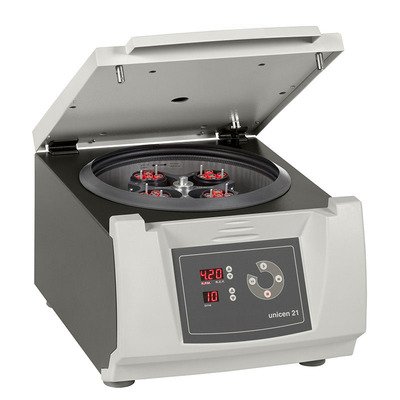
As an important separation equipment, centrifuge is widely used in biomedicine, chemical engineering, food industry and other fields. Its core function is to generate centrifugal force through high-speed rotation to achieve separation and purification of substances. In recent years, coreless motors have gradually become the main driving component of centrifuges due to their high efficiency, precision and reliability.
Design requirements of centrifuge
When designing a centrifuge, several factors need to be considered, including speed range, load capacity, temperature control, noise levels and ease of maintenance. The introduction of coreless motors can effectively meet these needs.
1. Speed speed range: Centrifuges usually need to operate at different speeds to adapt to different separation needs. Coreless motors can provide a wide range of speed adjustment and are suitable for a variety of application scenarios.
2. Load capacity: During the operation of the centrifuge, the rotor will bear different loads. The high power density of the coreless motor enables it to provide sufficient torque in a small volume, ensuring that the centrifuge operates stably under high loads.
3. Temperature control: The centrifuge will generate heat when running at high speed, which will affect the performance and life of the equipment. Design an effective temperature monitoring and control system to ensure that the motor operates within a safe temperature range.
4. Noise and Vibration: In a laboratory environment, noise and vibration are important considerations. The brushless design of the coreless motor makes it produce less noise and vibration during operation, making it suitable for situations where quiet operation is required.
Application scheme of coreless motor
1. Accurate speed control system: The speed control of the centrifuge is the key to its performance. A closed-loop control system can be used, combined with encoders and sensors, to monitor the speed in real time and perform feedback adjustments. By adjusting the input current of the motor, the stability and accuracy of the rotation speed are ensured.
2. Temperature monitoring and protection mechanism: In the design of the centrifuge, a temperature sensor is added to monitor the operating temperature of the motor in real time. When the temperature exceeds the set threshold, the system can automatically reduce the speed or stop running to prevent the motor from overheating and protect the safety of the equipment.
3. Multi-stage centrifugal design: In some high-end applications, a multi-stage centrifuge can be designed to use multiple coreless cup motors to drive different rotors respectively. This can achieve higher separation efficiency and adapt to more complex separation requirements.
4. Intelligent control system: Combined with Internet of Things technology, the centrifuge can be equipped with an intelligent control system, and users can remotely monitor and control it through mobile phones or computers. Obtain the operating status, rotation speed, temperature and other data of the equipment in real time to improve the convenience and safety of operation.
5. Modular design: In order to improve the flexibility and maintainability of the centrifuge, a modular design can be adopted. Separating the coreless motor from other components facilitates replacement and upgrades and reduces maintenance costs.
6. Safety protection design: In the design of the centrifuge, considering safety, multiple protection mechanisms can be set up, such as overload protection, short-circuit protection, etc., to ensure that the equipment can automatically shut down under abnormal circumstances and avoid accidents.
Summary
The application of coreless motors in centrifuges is becoming the mainstream choice for centrifuge design due to its advantages such as high efficiency, precision, low noise and low maintenance costs. Through reasonable control systems, temperature monitoring, intelligent design and other solutions, the performance and user experience of the centrifuge can be further improved. In the future, with the continuous advancement of technology, coreless motors will be more widely used in centrifuges, providing more efficient solutions for separation and purification processes in various fields.
Post time: Jan-13-2025

